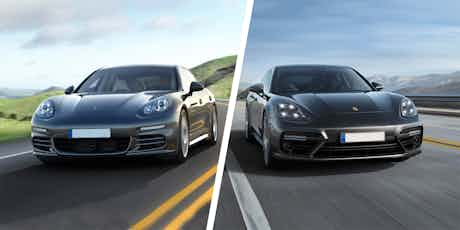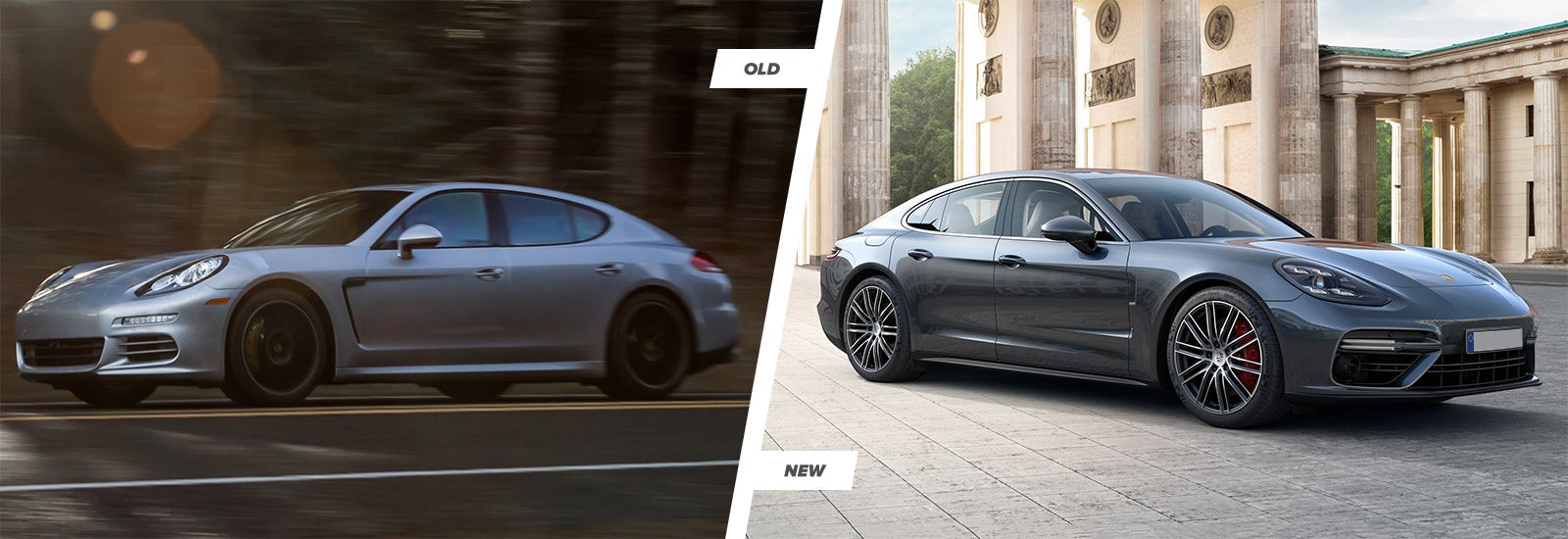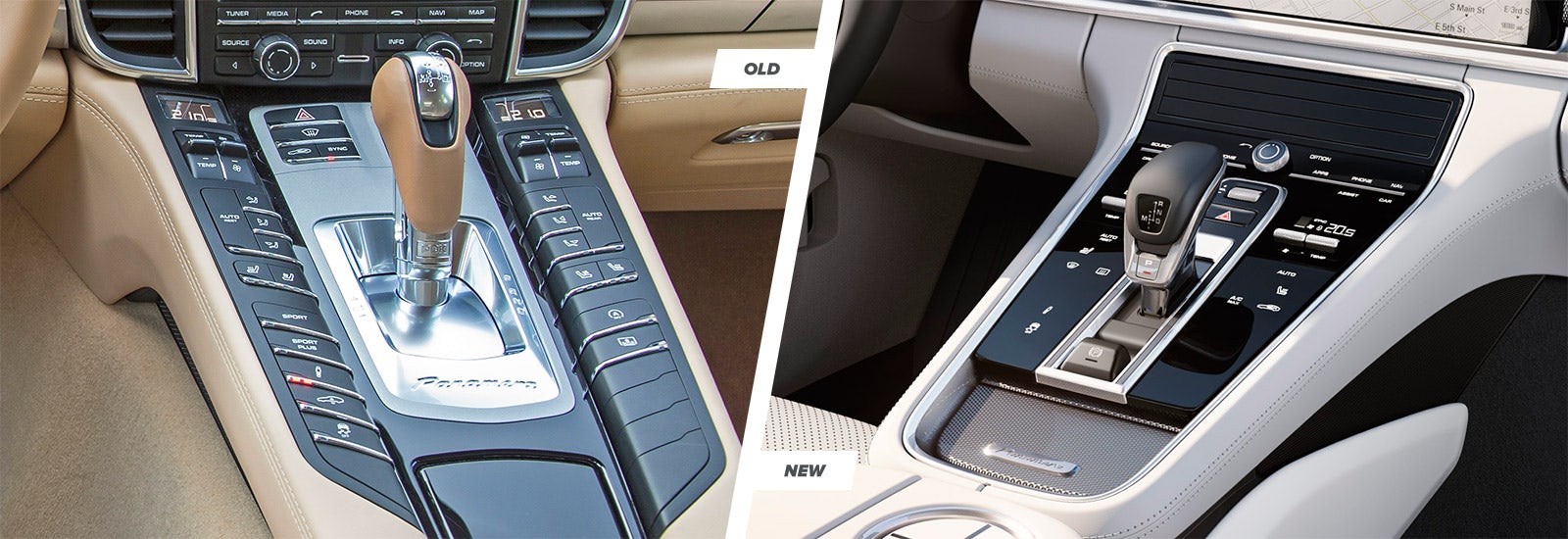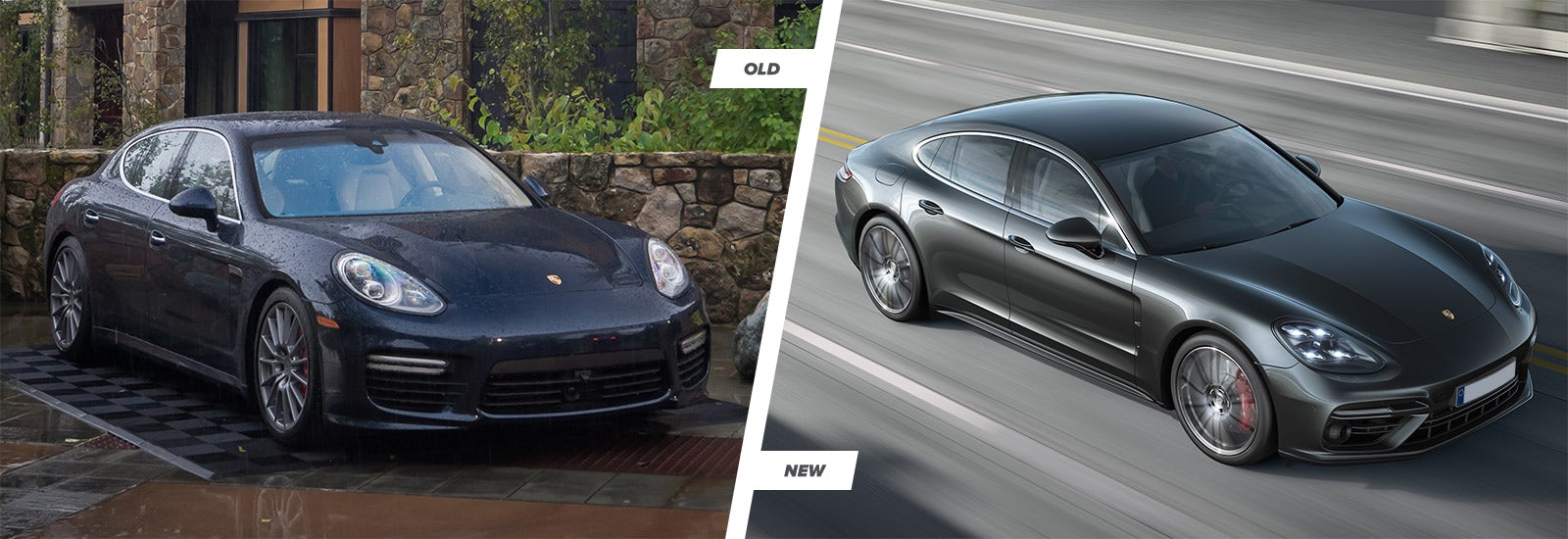2017 Porsche Panamera: old vs new compared
June 29, 2016 by carwow staff

Porsche has revealed the all-new Panamera. With the outgoing model selling more than 150,000 units worldwide since its 2010 debut, the second generation car has plenty to live up to. We compare the latest release with the original to discover what’s changed.
Read our review of the outgoing Porsche Panamera to see where the new model is coming from. Check out the rivals it’ll have to beat in our list of the best luxury cars.

Porsche Panamera old vs new – styling
The old model was frequently criticised for looking a little dumpy from some angles. Porsche designers have looked to address this with a shape which – although instantly familiar – appears much more pleasing on the eye than before.
The slightly portly proportions of the old car were most notable at the rear. The new model looks much sleeker in profile – a more sloping roofline, fuller passenger window shape and slimline rear bumper lend it an appearance more reminiscent of a four-door 911 than ever. The taillights are slimmer than before, and feature three-dimensional LEDs. A narrow LED strip connects the lights for a distinctive look when the lights are on.
The new lighting arrangement sits just below an electrically-operated rear spoiler which raises at speed for added stability. In the case of the top-spec Turbo model, the three-piece design divides and opens outwards as it rises in a gloriously over-engineered piece of design.
At the front, the face remains similar to before, but a refreshed bumper design, LED headlights and a lower, longer bonnet line all help to deliver subtle improvements.
The new car has grown subtly in every dimension, measuring 34mm longer, 6mm wider and 5mm taller than before. The wheelbase has also stretched by 30mm, with the front axle nudged closer to the front of the car for a sportier stance. The car sits on 19 or 20-inch alloy wheels depending on spec. Massive 21-inch wheels are optional.

Porsche Panamera old vs new – interior
Though the theme of a low-slung cabin complete with a high central transmission tunnel remains, the new Panamera’s interior features a vast reduction in the number of physical buttons to offer occupants a much more contemporary appearance.
A tablet PC-like display in the centre of the dash measures 12.3 inches, and can be customised to the driver and front passenger’s tastes. Surrounding the gear selector are a range of touch-sensitive controls which can, among other functions, open and close the dashboard air vents. Directly ahead of the driver are two seven-inch displays mounted either side of a centrally mounted analogue rev counter. Apple CarPlay is standard, and cabin comfort can be improved further thanks to an optional four-zone climate control system.
Interior space is set to improve courtesy of the longer wheelbase, as has boot volume – a 495-litre volume is up 50 litres on the old car. Split folding rear seats allow that figure to increase to 1,304 litres if needed.

Porsche Panamera old vs new – driving
The second-gen Panamera rides on a new platform, which is also likely be shared with future Bentley models. This new chassis, combined with lightweight aluminium body panels means that, despite the increase in size and equipment levels, the new Panamera is expected to weigh pretty much the same as the original.
In order to make the Panamera one of the sharpest-handling sports saloons on the market, Porsche has thrown all of its tried-and-tested acronyms at the latest car. PASM, PDCC Sport and PTV may all seem like jargon to the uninitiated, but respectively allow the driver to alter suspension response, improve cornering stability and increase overall grip. All systems are tied together by what Porsche calls 4D Chassis Control, which optimises each of these settings in real time.
Further new features include an active body roll system which reduces lean in the corners and rear axle steering. This system is already put to good use in the 911 Turbo and GT3 RS where agility improves at low speed and stability increases at high speed.

Porsche Panamera old vs new – engines
The latest Panamera ditches the naturally aspirated engines of old in favour of a fully twin-turbocharged petrol and diesel lineup.
The new entry point to the range is the 4S. Powered by a 3.0-litre V6, it offers up 434hp and 406lb ft of torque – 20hp and 22lb ft up from the first-gen car. The newly fettled Turbo, meanwhile, gains a hefty 30hp and 52lb ft over the outgoing model. The 542hp V8 monster now fires itself to 62mph from rest in as little as 3.6 seconds and on to a 190mph top speed. Despite the increase in performance, both engines are more frugal than ever – the 4S becomes 11 per cent more efficient, while the Turbo returns 30.4mpg in official tests – 3mpg better than before.
The most frugal model in the new range is the 42.1mpg-rated diesel – but fuel economy hasn’t come at the expense of performance. Thanks to a 177mph top speed, the Panamera 4S diesel is the fastest diesel-engined production car money can buy. The 4.0-litre V8’s 627lb ft torque output, available from 1,000 to 3,250rpm, should give enormous real-world shove.
All three engines are paired with a new eight-speed PDK dual-clutch automatic gearbox and, while all models will be four-wheel drive from launch, rear-wheel drive models are likely to feature in future. A hybrid version is also likely to arrive at a later date but, for the time being, sales of the old Panamera petrol/electric model will continue.

Porsche Panamera old vs new – specs
Porsche has ramped up the tech levels compared to the outgoing Panamera, with the new car benefiting from a host of semi-autonomous functions. Porsche InnoDrive uses a mix of radar, camera and satellite navigation information to optimise acceleration, braking, and gear selection up to 1.9 miles down the road. Safety during night driving is aided by a thermal imaging camera, which can detect pedestrians and animals that might aimlessly wander into the road.
In terms of comfort and convenience, the new Panamera benefits from optional extras including a panoramic roof, massaging seats and a 3D sound system by high-end hi-fi specialists Burmester.

Porsche Panamera old vs new – prices and release date
Prices for the all new Panamera have increased slightly compared to the outgoing car. The new 4S costs £88,700 – an increase of £1,925 – while, at £113,075, the Turbo costs £4,144 more. The Diesel 4 costs from £91,788. The new Panamera is available to order now, with UK deliveries due in November 2016.
Save money on your next new car
Read our review of the outgoing Porsche Panamera to see where the new model is coming from. Check out the rivals it’ll have to beat in our list of the best luxury cars.















